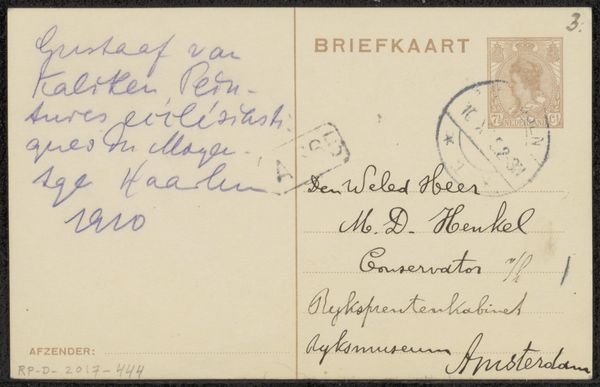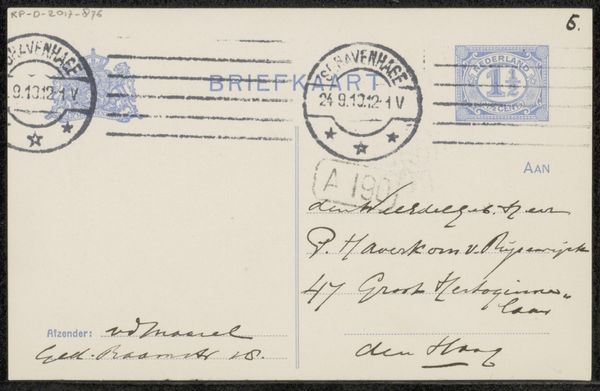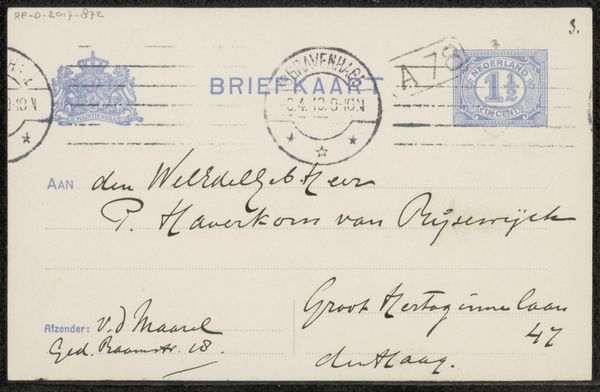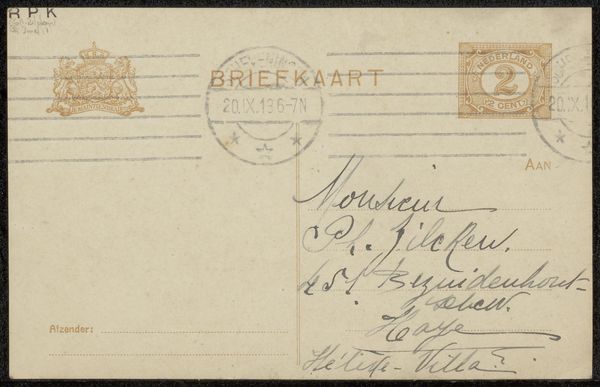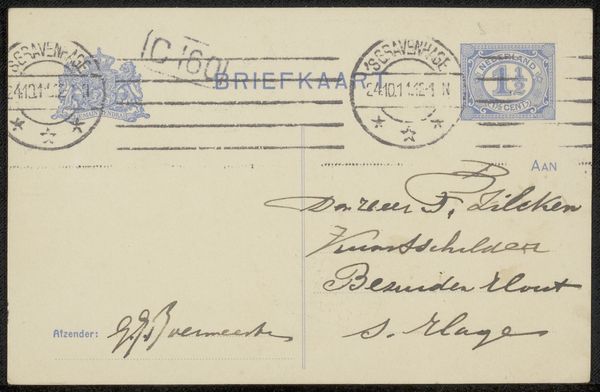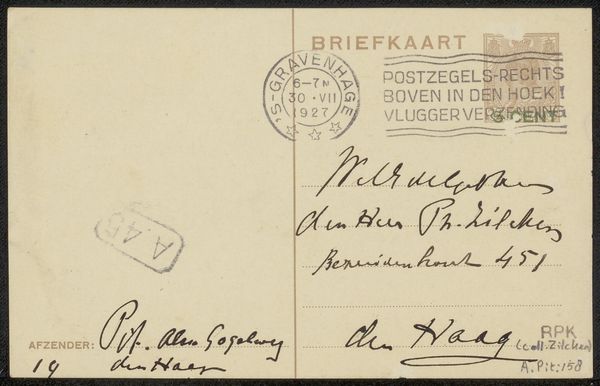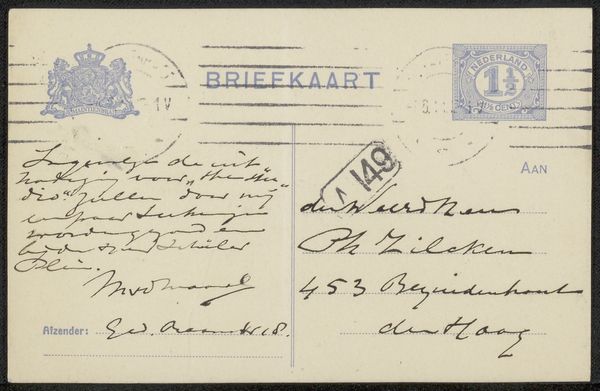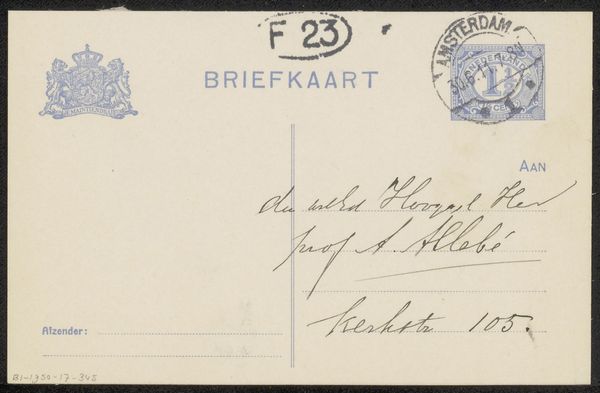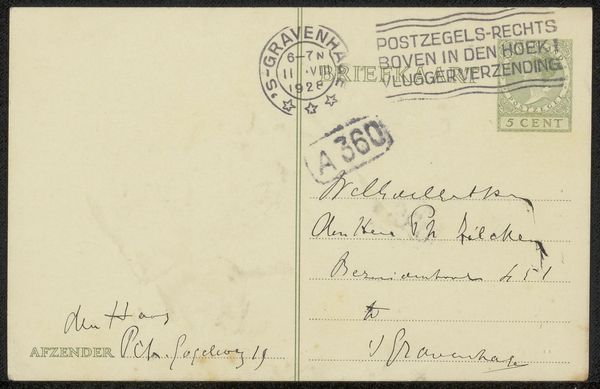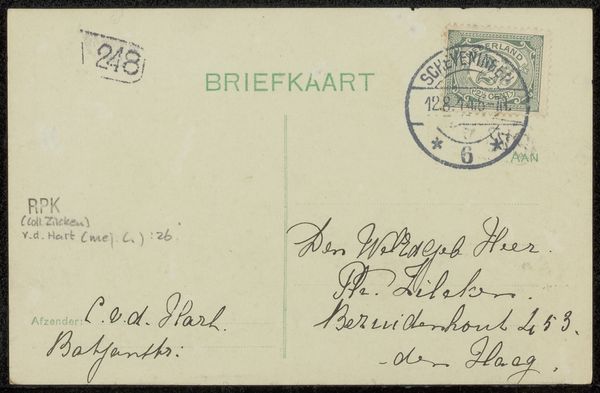
drawing, paper, ink
#
drawing
#
comic strip sketch
#
hand-lettering
#
hand drawn type
#
paper
#
personal sketchbook
#
ink
#
hand-drawn typeface
#
pen-ink sketch
#
pen work
#
sketchbook drawing
#
storyboard and sketchbook work
#
sketchbook art
Copyright: Rijks Museum: Open Domain
Editor: This is a drawing on paper in ink, a postcard to Alida Johanna Moes-Veth, possibly from 1943, by Jan Knoef. It looks pretty straightforward – just a simple hand-written note, nothing seemingly out of the ordinary. How do you read the image? Curator: Indeed, on the surface it’s a humble artifact, but consider the historical weight it carries. It was made perhaps during wartime. Postal markings are more than mere labels; they're potent symbols of communication during constrained times. Note the lottery stamp. It’s a peculiar combination of civic hope and random chance amidst potential despair, wouldn’t you agree? Editor: So you see a tension between hope and despair in the lottery stamp and the war year, but isn't that a bit of a reach? Maybe it's just an everyday object with no special meaning beyond a simple communication? Curator: Consider, though, the symbolism embedded within commonplace imagery. The very act of sending a postcard then becomes a subversive act of maintaining normalcy. A simple correspondence stands as a silent protest against the disruption and control characterizing those times. Don't you see how these seemingly insignificant details build into something much bigger? Editor: I think I am beginning to see it. So the images and little visual elements are charged with this tension between maintaining appearances and reflecting what must have been a very unsettling environment. It makes you consider the hidden language embedded within everyday images. Curator: Precisely! It encourages us to look deeper, understanding the hidden codes within visual culture, remembering how symbols are never truly neutral. Editor: This has opened my eyes to reading art differently, viewing even the simplest forms as layered with meaning and historical context. Thanks!
Comments
No comments
Be the first to comment and join the conversation on the ultimate creative platform.
